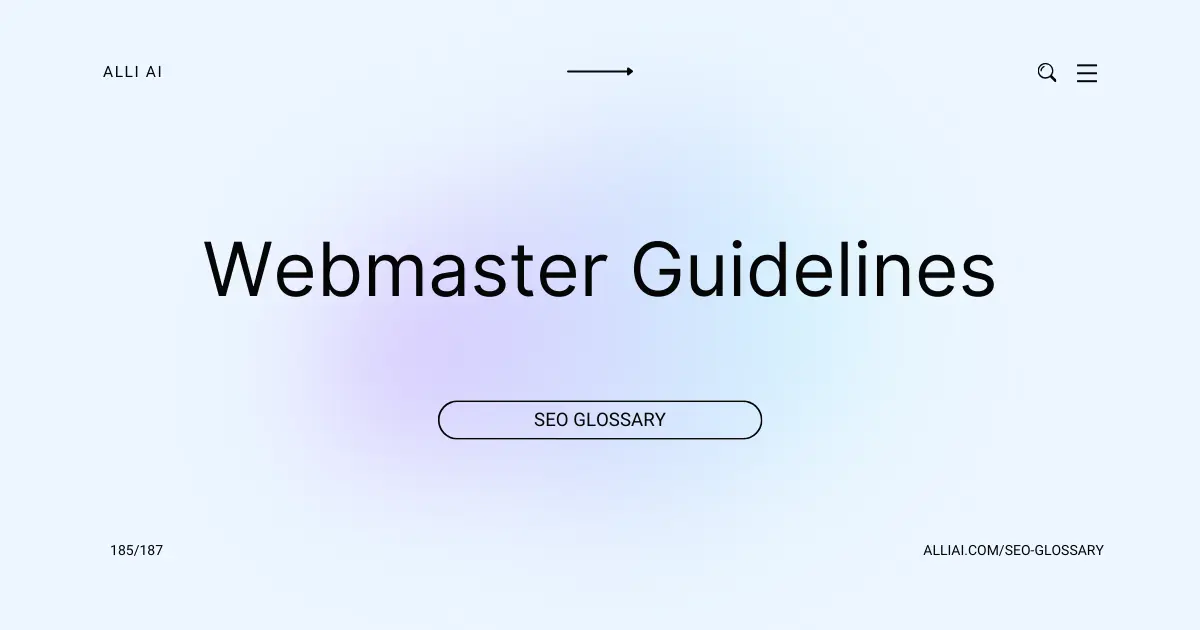What Does SERP Volatility Mean?
SERP Volatility refers to the frequency and magnitude of changes in search engine results page (SERP) rankings. It indicates how often and how significantly the positions of websites on SERPs fluctuate due to factors like algorithm updates, changes in search behaviors, or modifications to websites. High SERP volatility means that rankings are changing frequently and unpredictably, which can impact the visibility and traffic a website receives from search engines.
Where Does SERP Volatility Fit Into The Broader SEO Landscape?
SERP volatility refers to the frequency and extent of changes to search engine result pages (SERPs) rankings for various keywords. In the broader SEO landscape, it plays a critical role in shaping optimization strategies.
1. Monitoring and Analysis: SEO professionals must monitor SERP volatility to understand how search algorithms are changing. Frequent updates may signal an algorithm change by search engines like Google, which can impact the effectiveness of current SEO tactics.
2. Strategy Adjustment: High volatility may necessitate frequent revisions of SEO strategies. For instance, if certain types of content suddenly start ranking better, SEOs might shift their content creation priorities.
3. Risk Management: Understanding volatility helps in managing the risks associated with SEO investments. Knowing which keywords or SERPs are more stable allows businesses to make more informed decisions about where to allocate resources.
4. Competitive Analysis: SERP volatility can indicate increased competition for certain keywords. SEOs can use this information to analyze competitors’ tactics and adjust their approach to maintain or improve rankings.
5. Performance Forecasting: By analyzing patterns and triggers of SERP changes, SEO experts can predict future trends and prepare strategies that align with these anticipations. This is crucial for long-term SEO planning and achieving sustained visibility in search engines.
Understanding SERP volatility is essential for maintaining adaptability in the ever-evolving search landscape and ensuring that SEO techniques remain effective over time.
Real Life Analogies or Metaphors to Explain SERP Volatility
1. Weather Patterns: SERP volatility is like the weather patterns of the internet. Just as a clear day can suddenly turn stormy, search engine rankings can change dramatically overnight due to algorithm updates or SEO tactics by competitors, making it unpredictable and constantly changing.
2. Stock Market Fluctuations: Imagine SERP volatility as the stock market where each website’s ranking is a stock. Daily changes in stock prices due to market sentiment, economic reports, or company news are akin to how websites move up and down in search rankings based on Google updates, user behavior changes, or new content being published.
3. Ocean Waves: Much like ocean waves, SERP volatility is a continuous ebb and flow. Some days, the sea is calm, and rankings remain stable. Other days, big waves (algorithm updates) hit, and rankings fluctuate wildly, requiring businesses to ride the wave or risk sinking.
4. Musical Chairs: Think of SERP volatility as a game of musical chairs played by websites. When the music (algorithm) stops, every site rushes to grab the best available chair (rank). Sometimes, you might find a better chair quickly; other times, you’re left scrambling when the music starts again.
5. Garden Growth: SERP volatility can be likened to gardening. Websites are plants that grow and shift in response to the nutrients (updates and SEO efforts) they receive and the weather conditions (market changes and competitor actions). Just as some plants might suddenly grow or wilt, website rankings can unexpectedly rise or fall.
6. Traffic Flow: Imagine driving to work on different routes (keywords) where traffic conditions change unpredictly due to road works or accidents (search algorithm updates); your journey time (website ranking) fluctuates based on these conditions, necessitating constant route reassessments.
How the SERP Volatility Functions or is Implemented?
SERP Volatility refers to the fluctuation or changes in search engine results page (SERP) rankings. Here’s how it functions or is implemented:
1. Algorithm Updates: Search engines like Google periodically update their algorithms to provide better search results. These updates can cause significant shifts in SERP rankings as new ranking criteria are applied.
2. User Behavior Changes: Changes in user behavior, such as new search trends or increased mobile usage, can alter how pages are ranked.
3. Technical Changes on Websites: Modifications like changes to site structure, meta tags, or content updates can impact SEO and thus SERP rankings.
4. Backlink Profile Fluctuations: Gaining or losing backlinks can affect domain authority and SERP positions.
5. Competitor Actions: SEO enhancements or content updates by competitors can affect their rankings and, indirectly, the rankings of others.
6. Search Engine Market Share Changes: Fluctuations in the market share of search engines themselves can shift how traffic is distributed.
7. External Factors: Events like news stories or viral content can temporarily boost certain topics or websites in SERP rankings.
Each of these elements can cause volatility in SERP, influencing how stable or unstable keyword rankings are over time. Monitoring these changes is crucial for maintaining or improving SEO strategies.
Impact SERP Volatility has on SEO
SERP volatility refers to frequent changes in search engine results page rankings for various keywords. This can significantly impact a website’s SEO performance and user experience in several ways:
1. SEO Performance: High SERP volatility can lead to unstable search engine visibility, making it challenging for websites to maintain consistent organic traffic. Fluctuating rankings can affect the effectiveness of SEO strategies, as tactics that worked well one day might not be effective the next due to algorithm changes or modifications in search engine policies.
2. Rankings: Volatility affects keyword rankings, which are crucial for driving traffic to a website. Constantly changing rankings can result in decreased click-through rates (CTR) as websites appear less frequently in top positions. Sustaining a stable ranking becomes harder, requiring ongoing adjustments to SEO tactics.
3. User Experience: Frequent changes in SERP can lead to inconsistencies in user experience. Users may find it difficult to locate familiar sites if they frequently move up and down in rankings. Additionally, volatility might cause a discrepancy in the quality of search results, as less optimized websites might temporarily outrank more relevant or user-friendly sites.
SEO Best Practices For SERP Volatility
1. Monitor SERP volatility using tools like SEMrush, Ahrefs, or Moz to track fluctuations and identify which factors are causing changes.
2. Analyze competitors who have maintained or improved their rankings to understand their SEO strategies and elements they might be optimizing differently.
3. Review your current keyword strategies. Identify if the volatile SERP impacts your primary keywords, and adjust focus on more stable, relevant long-tail keywords.
4. Update and optimize content regularly to ensure it remains relevant, comprehensive, and provides value exceeding that of your competitors.
5. Increase site speed by optimizing images, leveraging browser caching, and improving server response time to enhance user experience and meet Google’s Core Web Vitals expectations.
6. Ensure mobile optimization as Google predominantly uses mobile-first indexing. Check through Google’s mobile-friendly test and make necessary adjustments.
7. Expand your backlink profile by gaining high-quality links from reputable sites within your industry to boost domain authority.
8. Utilize schema markup to help search engines understand website content and context better, potentially increasing visibility in rich snippets and other SERP features.
9. Regularly refine internal linking to ensure that Google can efficiently index important pages and distribute page authority across your site.
10. Track user behavior metrics like bounce rate, session duration, and pages per session via Google Analytics to understand and improve user engagement.
11. Adjust SEO strategy based on data analytics and trends. Use Google Search Console to track performance and spot crawling or indexing issues.
12. Continuously test and adapt to algorithm changes. Implement A/B testing to see what SEO strategies are effective under new conditions and adjust accordingly.
Common Mistakes To Avoid
1. Ignoring Algorithm Updates: Failing to stay informed about updates can cause significant drops in SERP rankings. Regular monitoring and adaptation to new SEO best practices can mitigate this.
2. Over-reliance on Single Metric or Channel: Depending solely on organic search, or a single metric for evaluating performance, overlooks other important metrics like click-through rates or bounce rates, leading to skewed tactics.
3. Neglecting Content Quality and Relevance: Continuously producing low-quality or irrelevant content can harm your rank. Always prioritize user experience and content relevance.
4. Using Black-Hat SEO Techniques: Practices like keyword stuffing, cloaking, or using private link networks can result in penalties once detected, severely affecting visibility.
5. Failure to Optimize for Mobile: With mobile-first indexing, not having a mobile-friendly website will negatively impact rankings.
6. Ignoring Local SEO: For businesses with a local presence, not optimizing for local search can cause missed opportunities in SERPs.
7. Lack of Competitor Analysis: Not monitoring the strategies and performance of competitors can leave you behind, especially if they adapt more quickly to market or algorithm changes.
8. Inconsistent Tracking and Analysis: Without consistent monitoring and analysis of SEO performance and SERP positions, you can’t effectively respond to volatility.
Each of these points requires attention and strategic planning to prevent negative impacts on website rankings in a fluctuating SERP landscape.






